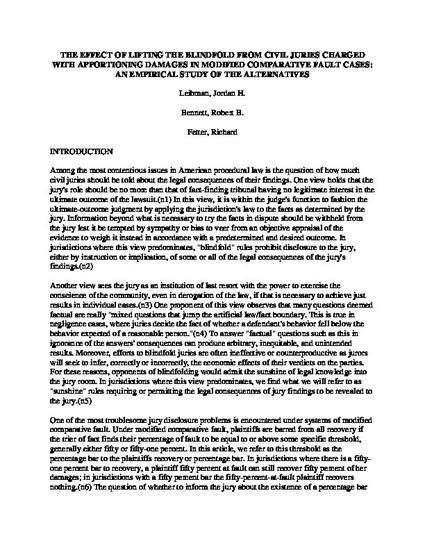
Article
The Effect of Lifting the Blindfold From Civil Juries Charged with Apportioning Damages in Modified Comparative Fault Cases: An Empirical Study of the Alternatives
American Business Law Journal
Document Type
Article
Publication Date
1-1-1998
Disciplines
- Civil Law,
- Civil Procedure and
- Law
DOI
http://dx.doi.org/10.1111/j.1744-1714.1998.tb01009.x
Abstract
Focuses on a study on the effect of lifting the blindfold from civil juries charged with apportioning damages in modified comparative fault cases. Historical background on comparative fault in the United States; Origin of blindfolding; Comparison of blindfold modified comparative fault verdicts with sunshine verdicts; Conclusions.
Rights
‘This is a peer reviewed version of the following article:
Leibman, J. H., Bennett, R. B., & Fetter, R. (1998). The effect of lifting the blindfold from civil juries.. American Business Law Journal, 35(3), 349.
,which has been published in final form at: DOI:10.1111/j.1744-1714.1998.tb01009.x. This article may be used for non-commercial purposes in accordance With Wiley Terms and Conditions for self-archiving'.
Citation Information
Jordan H. Leibman, Robert B. Bennett and Richard Fetter. "The Effect of Lifting the Blindfold From Civil Juries Charged with Apportioning Damages in Modified Comparative Fault Cases: An Empirical Study of the Alternatives" American Business Law Journal Vol. 35 Iss. 3 (1998) Available at: http://works.bepress.com/robert_bennett/20/
